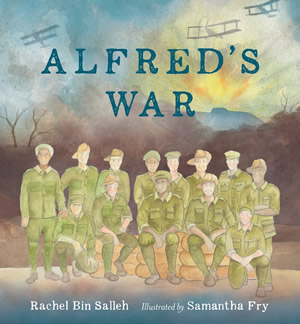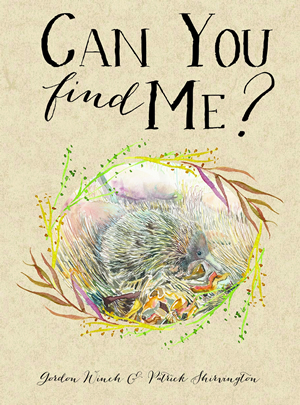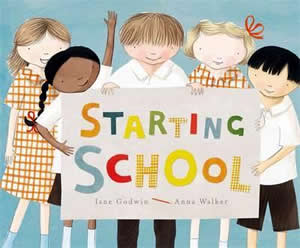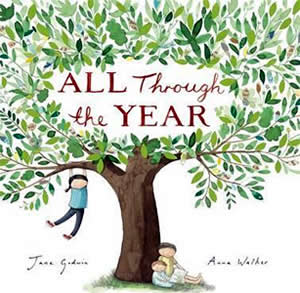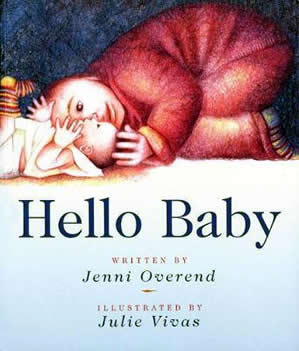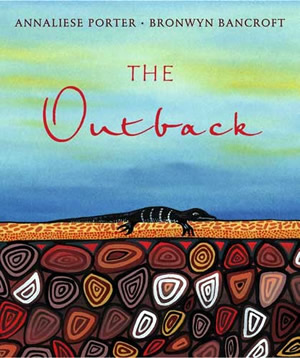Alfred’s War By Rachel Bin Salleh and Samantha Fry, Magabala Books, 2018. ‘Alfred’s War opens our hearts to the contribution and sacrifice that Aboriginal and Torres Strait Islander veterans made to Australian’s war efforts.’ Alfred is a first Australian who lives outside, sleeps on park benches and under trees. He enlisted in the army as a young man and sailed off to fight in the first world war. His comrades meant a lot to him, and even when he returned home after the war he often thought of them. They even appeared in his dreams. Alfred’s War is not the same as other the men’s war, as he is one of the forgotten soldiers, one of the unnamed men. There is a double-page spread at the end of the book that explains how Aboriginal and Torres Strait Islanders were enlisted to fight in wars that Australia has been involved in. Alfred’s War highlights the lack of recognition of the Australian Aboriginal and Torres Strait Islander servicemen. While they were afforded equal pay and were considered equal among their mates, their service was not acknowledged upon their return. It is only more recently that their service and sacrifice has been acknowledged. Download…
Exploring Soils: A Hidden World Underground By Samantha Grover and Camille Heisler, CSIRO Publishing, 2017. ‘Have you ever wondered what happens in the earth underneath us?’ Journey with James as he learns that there is more to dirt than meets the eye. James wants to be a soil scientist, and he explores the ‘hidden world underground’. He learns about the differences between clay, silt and sand particles, and discovers what each soil type can be used for. Exploring Soils: A Hidden World Underground takes children on a journey into and under the earth. A wonderful resource not only for parents and grandparents but also for pre-school and primary schools. Teacher’s notes are also available from the CSIRO. The illustrations are drawn sensitively, and the level of detail in the insects is impressive. Ideal for the budding gardener. As an adult, even I learned things from this book! For example, I had never heard of Clorpt before 🙂 Suitable for ages 6 to 9 years. The book raises questions, such as: What is soil? How does it change? Why is it important? What can we do with soil? Awards Children’s Book Council of Australia 2018 notable books under the Eve Pownall Award for Information Books….
Can You Find Me? By Gordon Winch and Shirvington Patrick, New Frontier Publishing, 2017. Can You Find Me? is a delightful story about Australian animals hiding in their natural habitat. Journey along with your child as he or she discovers the animals hiding in the pictures. Even I had to search for a few of them the first time around! There is a lovely repetition on the pages, creating a rhythm to the story. Can You Find Me? teaches children about camouflage and about how animals, insects, and other creatures are often designed to reflect their environment. Can you find all the creatures hiding within the pages of this book?
Why Do Families Change? By Dr Jillian Roberts and Cindy Revell, Orca Book Publishers, 2017. ‘A reassuring and straightforward explanation of separation and divorce.’ Are you and your family experience separation or divorce and don’t know how to talk to your children about it? Why Do Families Change? opens with ‘Many animals in nature choose lifelong mates’. On the opening double page spread, we see three sets of paired birds and three sets of paired couples, including one same-sex couple. The following page continues in this light with more couples from different cultures getting married, as well as another same-sex couple. It stresses that some couples choose to have a common-law relationship where they live together but don’t actually get married. Why Do Families Change? presents a very open-minded view of the different types of relationships that are possible. It gently introduces children to the fact that some people stay married for their whole lives, while others separate or divorce. The story goes on to explain what separation is, and what divorce is, and why these changes can happen. Why Do Families Change? addresses the all-important issue that many children face, ‘Is it my fault?’. No matter how old your children are, there…
Left and Right By Lorna Hendry, Wild Dog, 2017. ‘Do you know your left from your right? Which hand do you write with? Does your left and right eye see the same thing? What side of the road do cars drive on and why? Here is everything you need to know about left and right!’ Left and Right is an innovative book by Australian author, Lorna Hendry. This is an interactive book that invites the reader to get involved by taking action and practicing what they’re reading. I did it myself when I read it! It works really well at helping you learn left from right by providing practical exercises and tools that you can employ to commit left and right to memory. It also assists with being observant and mindful of yourself and others. I could imagine children taking more notice of what they are doing and how, such as kicking a ball (which foot), brushing their teeth (which hand). Who knew that the eye I wink with is the same as the hand I write with but is different to the ear I listen with? These are things I hadn’t thought about before. Left and Right is scattered…
A Walk In The Bush By Gwyn Perkins, Affirm Press, 2017. A Walk In The Bush will take you and your child on a journey through the Australian bush. Grandad can’t find Iggy. He looks everywhere for him. When he finally finds him, he takes him on a journey into the Australian bush looking for wildlife. Together we meet many different native birds and learn their bird calls, and bump into the odd wallaby. There are also caterpillar messages on trees! This whole book is truly like the experience of walking through the Australian bush. Awards Winner: The Picture Book of the Year, Children’s Book Council of Australia, 2018.
Starting School By Jane Godwin and Anna Walker, Penguin Viking, 2013. ‘Tim, Hannah, Sunita, Joe and Polly are all off to school for the first time. Would you like to meet them and see how they go?’ Starting School takes us through all the different parts that make up starting at school, from the first day and meeting other students and the teacher, to an orientation around the school and in the classroom. The story concludes with a question, ‘What do you like about school?’. This can open a conversation between your and your child to discuss their experiences when they have started school, but could equally start as a conversation about what they think they might like about starting school if they haven’t already. Know the rules in school. Put your hand up. Listen to the teacher. Look after your things. Don’t run in the classroom. There are look and find elements on the opening endpapers, where we are introduced to the names of the children in the class as well as the teacher, and we see all of their favourite things; possibly what they’ve brought to school on their first day and have in their desks. The closing…
All Through the Year By Jane Godwin and Anna Walker, Penguin Viking, 2010. ‘Open this book and travel your way all through the year and treasure each day.’ From this well-known author/illustrator duo comes All Through the Year. Reading like a collection of Shakespearean sonnets, All Through the Year invites the reader to share in this rhyming journey through the seasons and activities of a year in the life of an everyday Australian family. The different style Jane Godwin has used in this kids book is also great for teaching children about different styles of writing. I don’t think I’ve seen any other children’s book author us the same format, it’s quite unique to this author (she also applied the same format in Today We Have No Plans). This is a great book to teach children about the months of the year, the seasons that accompany those months, and the different holidays or events that also coincide. All Through the Year is another fine work of art by Anna Walker, beautifully illustrated, and if I am not mistaken, we are seeing the same family that met in Today We Have No Plans! We are certainly seeing the same tree in the…
Hello Baby By Jenni Overend and Julie Vivas, Frances Lincoln Children’s Books, 2008. ‘Hello baby,’ I say quietly. ‘Hello’ Delightfully drawn in a soft and scribbly fashion, Hello Baby takes us on the journey of a family and a home birth. My sister read this book to my niece for years when she was younger, and she still loves it now. She was so excited to see a copy of it on my desk, so we went and snuggled and read it together again. This is a great book for families who are expecting another child. It is sensitively written to explain to children some of the things they might expect to see and experience before, during and after the birth. In Hello Baby, the whole family is involved in the birthing process, with the other children helping as well. Originally published in 1999, this book has been reprinted many times, which just goes to show that it’s popular! Awards Shortlisted for Picture Book of the Year, Children’s Book Council of Australia, 2000.
The Outback By Annaliese Porter and Bronwyn Bancroft, Magabala Books, 2005. Dark, red earth surrounding flat, stony plains — gibbers lay on scorching sand, where seldom it rains. What a lovely little book, richly illustrated in the style of traditional Australian Aboriginal paintings. The illustrations depict recognisable Australian animals, like goannas, snakes, wallabies and cockatoos, and landscapes such as the desert plains and Uluru. The Outback tells the tale of the harshness of the land, the desert, and the desert animals. This is a bush ballad about the Australian outback that was written by Annaliese Porter when she was only eight years old! She is one of Australia’s youngest published writers. What a great example of a story to read to a young writer 🙂


